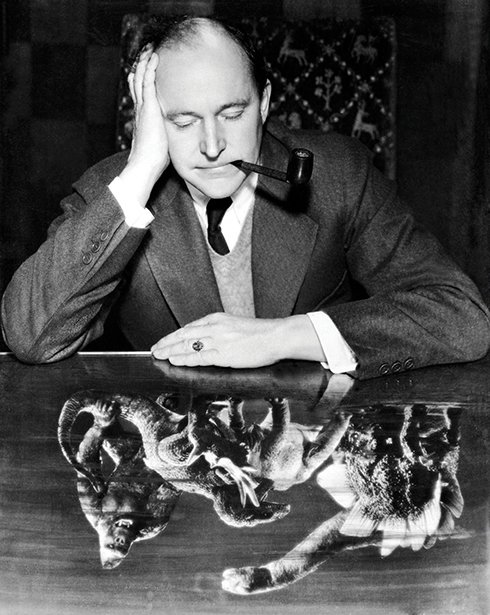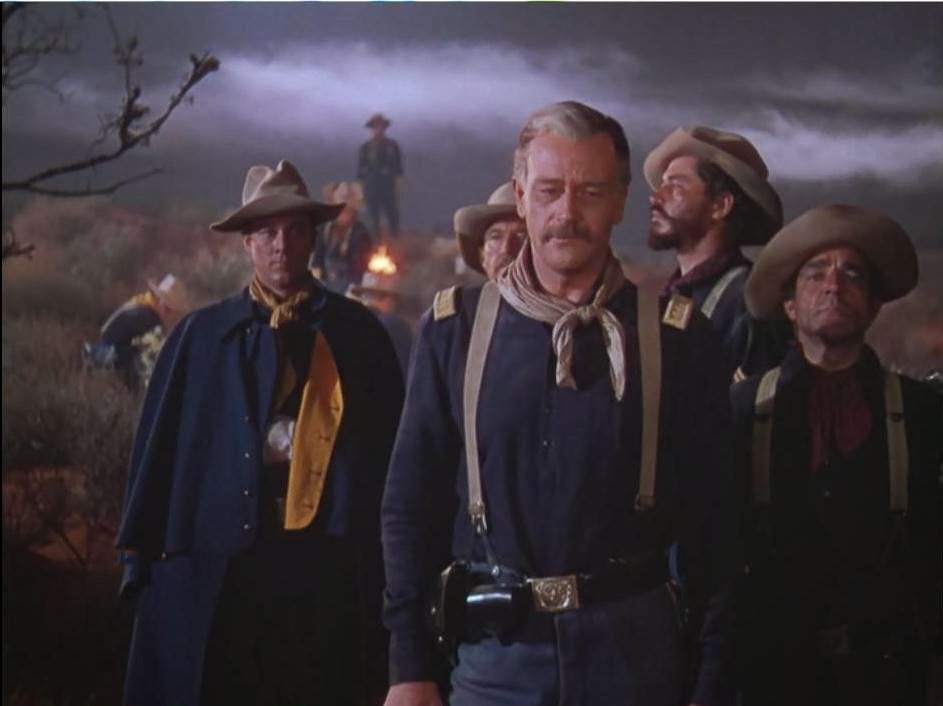JOHN FORD Chapter 2: She Wore a Yellow Ribbon & Young Mr. Lincoln by Craig Hammill
As part of our The Ford Fundamentals: John Ford Director of 2022 series, founder.programmer Craig Hammill is writing an appreciation in 12 chapters, a prologue, and an epilogue across the year.
Important Note: Movies will be talked about in depth so definitely spoilers!
CHAPTER 2: Where We’re Going, Where We’ve Been
John Ford at Fox and on his own
Ford was an ornery, complicated man. To say the least. Very few folks could gain his respect to actually “manage” him if that’s the right word. But two who seemingly figured out how to get the best out of Jack Ford while checking Ford’s indulgences were 20th Century Fox’s fabled head of production Daryl Zanuck and famous producer/director/studio head/adventurer Merian C Cooper (most famous for making King Kong with his filmmaking partner Ernst Schoedsack).
Ford had a long storied career at Fox that ran near thirty years. While he was there, he made some of his greatest movies including Young Mr. Lincoln, The Grapes of Wrath, My Darling Clementine, How Green Was My Valley. Studio head Zanuck, a character himself, had a reputation for being a brilliant story editor, recognizer of great material to option, and film editor. But Zanuck lead movies, if helmed by weak or “yes sir” directors, could often come out prosaic. Effective to be sure. But prosaic and straightforward.
Ford brought the poetry. Ford brought the cinema. Ford brought the indescribable transcendent humanism.
Zanuck may have appreciated this which is why Ford was often put on the pictures that needed someone who deeply understood the human heart, family dynamics, and history.
Zanuck brought the editor’s scissors and story editor’s nose for what’s important and what’s not. Ford reportedly resented the hell out of this as Zanuck would take movies like The Grapes of Wrath and My Darling Clementine and re-shoot scenes or add scenes once Ford had moved on to his next picture to make them a bit more accessible, commercial, traditional.
Famed 20th Century Fox Studio Head, Daryl F. Zanuck
Most famously, Zanuck added an uplifting Ma Joad monologue at the end of Grapes of Wrath where Ford had intended to end the picture with a beautiful shot of Tom Joad climbing a hill in the dark to an uncertain future (still there, just the penultimate scene). And Zanuck added expository scenes to My Darling Clementine to make the movie a little more focused in its creation of tension between the Earps and the Clantons. Zanuck made the picture more traditionally “Good guy/bad guy”. You can even tell the Zanuck ordered re-shoots on Clementine and Wrath because the shots are much more standard, far less poetically charged. And they do stick out a bit.
Still Ford begrudgingly respected Zanuck’s genius with story and the public. And Zanuck knew he had the best director in the business. As a sign of respect, after World War II, Ford insisted that he wanted his next picture to be produced by Zanuck or nobody.
One of their greatest collaborations is the almost impossible to describe “origin story” Young Mr. Lincoln starring Henry Fonda. This is often considered one of Ford’s greatest movies (by the likes of Sergei Eisenstein and Orson Welles) precisely because it seems to hit a Ford “sweet spot” where all the ingredients of a Ford picture are in perfect balance.
The movie itself often surprises folks because it ONLY deals with the events of Abe Lincoln’s life BEFORE anything we learn about in the history books. We see him as a young man fall in love with Ann Rutledge who dies young. We see him self-educate himself. And we see him fight and argue one of his first prominent cases when he comes to Springfield, Illinois. We see him romance Mary Todd and cross paths with Senator Stephen Douglas. But that’s it! No Presidency. No Civil War. No Gettysburg address.
Even more, the case at the center of the movie is almost certainly a complete fiction or heavily fictionalized. And yet we get more a sense of Abe Lincoln’s character and values in Young Mr Lincoln than in almost any other work of American pop culture about the man (until Doris Kearns Goodwin’s Team of Rivals and Spielberg’s/Kushner’s adaptation Lincoln).
Young Mr Lincoln is full of Ford grace notes that are almost unbearably moving. Spring turns to winter early in the movie and Lincoln visits the grave of his first love in the snow.
Later Lincoln stops a mob hellbent on lynching his clients (two teenage boys wrongfully accused of murder during a town fair) not with fiery oratory but with self-deprecating jokes that the mob is going to cheat him out of his lawyer’s fee. He so bemuses the mob, he actually de-escalates the situation enough to avoid disaster.
We see Lincoln employ this same strategy (in an almost cynical way) in the trial itself though he does eventually prove the boys innocent on the merits.
And, as has been noted by many, Ford ends the movie on a shot so literate and simultaneously cinematic as to almost instantly shame the rest of us. After winning the case, Lincoln goes for a walk in a storm. He ascends a hill and walks towards the impending tempest.
Not only is this a subtle reference to one of Lincoln’s most interesting quotes (“I know there is a God and I know he hates injustice and slavery. I see a storm coming and I see his hand in it. If he has a place and work for me, and I know that he has, I am ready. I am nothing but truth is everything.”) but it also expresses visually more than any speech or line of dialogue could.
***
After World War II, Ford, like so many other Hollywood filmmakers and actors, came back to a changed landscape. And like many, he decided to strike out on his own and partnered with his old RKO boss, Merian C Cooper to form Argosy Pictures (a nod to Ford’s beloved identification with the sea) which would produce Ford’s Cavalry trilogy and later, most famously, The Quiet Man.
Merien C Cooper, the polyglot producer.
Cooper is a towering figure in American cinema in his own right. An adventurer, a soldier, a documentarian, a director, a studio head, a producer, Cooper famously co-directed/produced King Kong. He was one of the few people Ford trusted and respected at RKO (possibly because Cooper lead a more verifiably brave and adventurous life then Ford). Cooper also knew how to navigate Ford while simultaneously making sure Ford had free reign and the resources he needed.
Ford often asserted in later life that his westerns and his Cavalry trilogy were simply made to produce hits that would set him up for his more experimental or smaller projects. And in part, this is almost certainly true. But Ford’s often dismissive attitude towards his post World War II western work also must have been a bit of a calculated ruse so that he could sneak in themes, topics, complexities while simultaneously claiming disinterest.
We talked in our first chapter about Fort Apache. Ford’s second Cavalry picture is the near impressionistic, gorgeous, technicolor She Wore a Yellow Ribbon. Here we see what happens when Ford de-couples from a story person like Zanuck. The movie has almost NO story to speak of. Basically Captain Nathan Brittles (John Wayne playing 20 years older) goes out on one more scout with his soldiers to try and stop a brewing battle with local angry Native American tribes. Along the way, he grandfatherly orchestrates a budding romance between one his soldiers and a young woman they are escorting to a stagecoach (the title refers to the habit of wearing a yellow ribbon in one’s hair to show affection for a soldier). Though he fails to prevent the battle, he does minimize the death and damage to both sides. And is called back from retirement to continue his work by the end of the picture.
Ribbon is a complex picture in that it demonstrates both Ford’s progressive and reactionary tendencies. The movie is pro-military at the expense of the Native American concerns. Yet the movie also shows the two wisest people to be the two older people-Brittles and his counterpart in the Native American tribe, Pony That Walks-who meet and calmly discuss a way to avoid all the needless bloodshed of their young men.
But She Wore A Yellow Ribbon really, at heart, is about a man realizing he’s aging out of the mainstream of life yet secretly wants to stay in that slipstream. Folks often talk about the poetic melancholy of the picture (which is there and is beautiful) yet forget that at the end of the picture, Brittles is re-called to active duty. Something he accepts at the drop of a hat.
It’s hard not to make the connection to Ford himself who was shifting to “the grand Old Man” status yet still had at least six stone cold masterpieces left in him (WagonMaster, Rio Grande, The Quiet Man, The Last Hurrah, The Searchers, and The Man Who Shot Liberty Valance were all yet to come).
But even more then these thematics, She Wore a Yellow Ribbon demonstrated Ford’s ability to adapt when he had to. A master at black and white, Ford proved himself a master of color as well. Famously on this picture, he encouraged his cinematographer Winton C Hoch (who won an Academy Award) to model the work on the paintings of Frederick Remington. And when Ford wanted to shoot sequences in actual lightning storms with very little light, he told Hoch that he (Ford) would take the blame if they didn’t turn out.
Ever the secret poet, ever the restless picturemaker, ever the Irish painter, Ford could sense a cinematic moment and go after it with the eagerness and excitement of a bloodhound.
Ford often said he felt his strength was pictorial. And this is a fair assessment since Ford’s eye is possibly the greatest eye in all of cinema.
Yet there have been many talented filmmakers adroit with an image. But it’s the poetry and meaning and intent of an image that seems to give it it’s true lasting power. One sees countless movies of pretty pictures. But one remembers Samurai fighting to the death in the rain, an abusive strongman crying on a beach when his good hearted slave wife dies, when Death plays chess with an arrogant knight, when a monolith appears at the foot of a bed of a dying astronaut.
When a future President ascends a hill to a storm. When an aging Captain leads his soldiers across a lightning swept American wilderness.
Craig Hammill is the founder.programmer of Secret Movie Club





